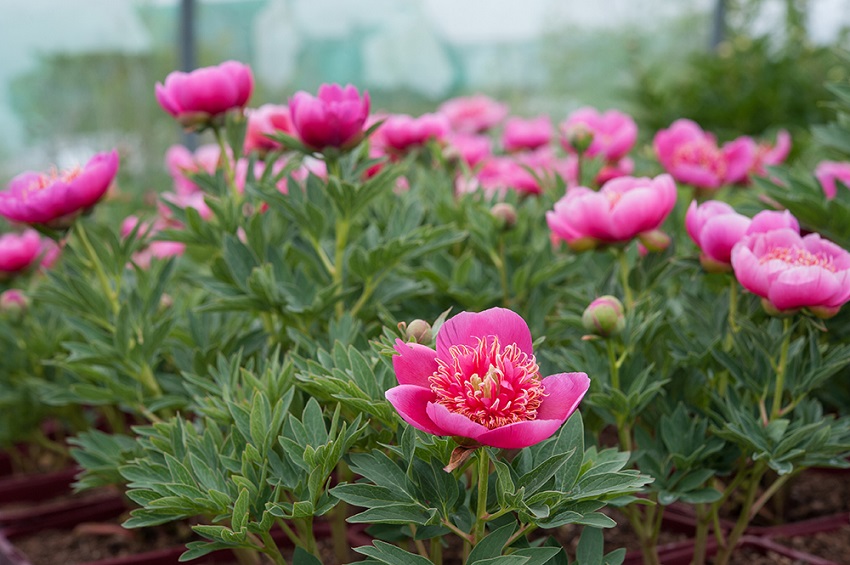Welcome to our comprehensive guide on the best season for growing peonies! If you’re a gardening enthusiast or simply love the beauty of these stunning flowers, you’ve come to the right place. In this article, we will explore the ideal conditions and timing for cultivating peonies to ensure they thrive and grace your garden with their vibrant blooms. So, let’s dive in!
Understanding Peonies
Known for their large, showy flowers, peonies are highly sought after for their captivating beauty and intoxicating fragrance. These exquisite flowers come in a variety of colors, including shades of pink, red, white, and even yellow. With their lush foliage and elegant petals, peonies are a favorite among gardeners and flower enthusiasts worldwide. Peony growth stages can be observed during the months of April and May, with their lush foliage and elegant petals appearing widely.
The Best Season for Peony Growth
Spring: A Prime Time for Planting
Spring, particularly April and May, is widely regarded as the best season for planting peonies. During this time, the soil is starting to warm up, and the risk of frost has significantly diminished. Planting peonies in the spring allows them to establish strong root systems before the heat of summer sets in. This, in turn, promotes healthy growth and robust blooming in the following years.
Summer: A Time of Blooming Beauty
Summer is when peonies truly shine, displaying their glorious blossoms for all to admire. Depending on the variety, peonies can bloom anytime between late spring and early summer, usually around June. The lush foliage provides an attractive backdrop to the stunning flowers, adding depth and texture to your garden. Be sure to provide adequate water and support for the blossoms as they reach their peak, ensuring their longevity and continued vitality.
Fall: Preparing for Winter
As the vibrant colors of summer fade away, fall arrives, signaling the time for peonies to prepare for winter. During this season, peonies undergo a process of dormancy, conserving their energy and resources for the colder months ahead. It is essential to practice proper care and maintenance during fall to ensure the health and longevity of your peony plants. We will explore this further in the subsequent sections.
Winter: A Period of Rest
Winter is a crucial time for peonies, as they require a period of rest to rejuvenate and gather strength for the upcoming growing season. As temperatures drop and the ground freezes, the above-ground parts of the peony plant will die back, while the roots remain dormant underground. It is crucial to protect the peony plant during this time by applying a layer of mulch to insulate the roots from extreme cold and temperature fluctuations.
Optimal Growing Conditions for Peonies
To ensure your peonies thrive and produce breathtaking blooms, it’s essential to provide them with the optimal growing conditions. Let’s take a closer look at the key factors that contribute to the success of your peony garden.
Sunlight: Embrace the Light
Peonies are sun-loving plants and thrive in full sunlight. It is recommended to provide them with at least six hours of direct sunlight each day. Placing them in a location with ample sun exposure will result in stronger stems, larger flowers, and overall healthier plants. However, if you reside in a region with scorching summers, providing some afternoon shade can help protect the delicate blooms from excessive heat.
Soil: The Foundation of Healthy Growth
Peonies prefer well-draining soil with a pH level between 6.5 and 7.5. The soil should be rich in organic matter and offer good aeration. If your soil tends to retain water or has poor drainage, consider amending it with organic compost or sand to improve its texture and drainage capacity. This ensures that the roots have access to the nutrients they need while preventing the risk of root rot.
Watering: Find the Right Balance
When it comes to watering peonies, striking the right balance is crucial. While they require consistent moisture, they are also susceptible to root rot if the soil remains excessively wet. Water your peonies deeply once a week, ensuring the soil is evenly moist. However, during hot and dry spells, you may need to increase the frequency of watering to keep the soil adequately hydrated.
Fertilization: Nourish for Optimal Growth
To promote healthy growth and abundant blooms, it’s important to fertilize your peonies regularly. Start by incorporating organic compost or well-rotted manure into the soil before planting. Once established, you can apply a balanced slow-release fertilizer in early spring. Avoid over-fertilizing, as excessive nitrogen can lead to excessive foliage growth at the expense of flower production.
Pest and Disease Control: Vigilance is Key
While peonies are generally resilient plants, they can still fall victim to pests and diseases. Keep a close eye on your plants for any signs of common issues such as botrytis blight, powdery mildew, or aphid infestations. Promptly address any problems through appropriate treatments or organic pest control methods to protect your peonies and ensure their well-being.
In Conclusion
Peonies are exquisite flowering plants that bring immense joy and beauty to any garden. By understanding the best season for their growth, providing optimal growing conditions, and practicing proper care and maintenance, you can cultivate vibrant and healthy peony plants that will enchant you year after year. Remember, spring is the ideal time for planting, summer is the season of glorious blooms, fall is for preparing for winter, and winter provides a period of rest and rejuvenation for these magnificent plants. Embrace the wonder of peonies, and watch your garden flourish with their unrivaled elegance and charm.

